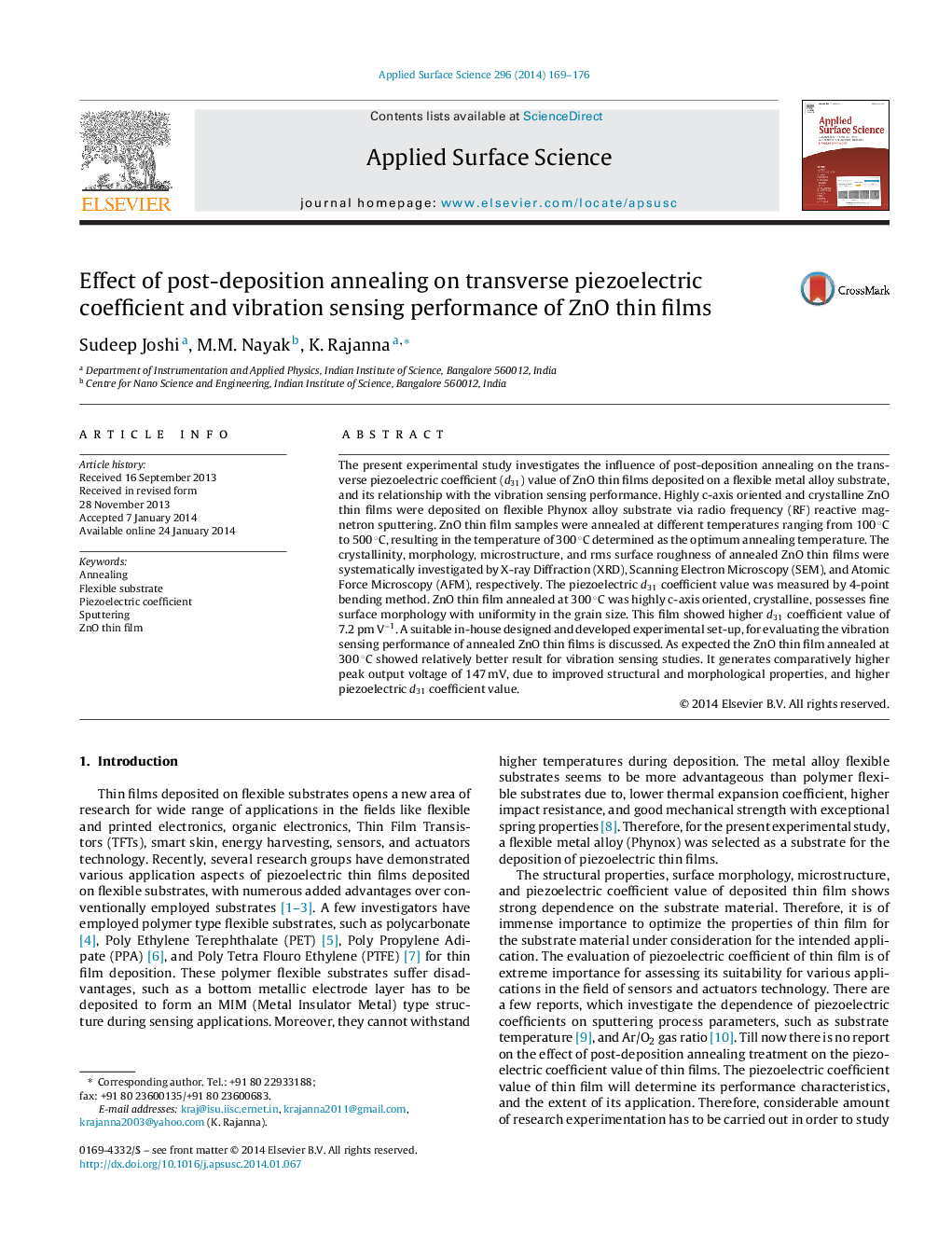| Article ID | Journal | Published Year | Pages | File Type |
|---|---|---|---|---|
| 5359582 | Applied Surface Science | 2014 | 8 Pages |
Abstract
The present experimental study investigates the influence of post-deposition annealing on the transverse piezoelectric coefficient (d31) value of ZnO thin films deposited on a flexible metal alloy substrate, and its relationship with the vibration sensing performance. Highly c-axis oriented and crystalline ZnO thin films were deposited on flexible Phynox alloy substrate via radio frequency (RF) reactive magnetron sputtering. ZnO thin film samples were annealed at different temperatures ranging from 100 °C to 500 °C, resulting in the temperature of 300 °C determined as the optimum annealing temperature. The crystallinity, morphology, microstructure, and rms surface roughness of annealed ZnO thin films were systematically investigated by X-ray Diffraction (XRD), Scanning Electron Microscopy (SEM), and Atomic Force Microscopy (AFM), respectively. The piezoelectric d31 coefficient value was measured by 4-point bending method. ZnO thin film annealed at 300 °C was highly c-axis oriented, crystalline, possesses fine surface morphology with uniformity in the grain size. This film showed higher d31 coefficient value of 7.2 pm Vâ1. A suitable in-house designed and developed experimental set-up, for evaluating the vibration sensing performance of annealed ZnO thin films is discussed. As expected the ZnO thin film annealed at 300 °C showed relatively better result for vibration sensing studies. It generates comparatively higher peak output voltage of 147 mV, due to improved structural and morphological properties, and higher piezoelectric d31 coefficient value.
Related Topics
Physical Sciences and Engineering
Chemistry
Physical and Theoretical Chemistry
Authors
Sudeep Joshi, M.M. Nayak, K. Rajanna,
